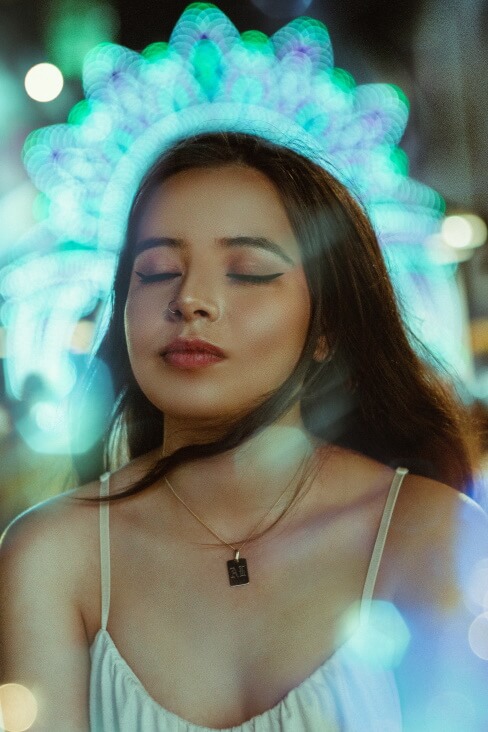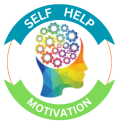Visualization techniques are a great way to reduce anxiety and visualization techniques for anxiety come in many forms.
Table of Contents
NB. If you are suffering from anxiety or stress, please consult a medical professional.

Hi, Ian here, and welcome to this article!
Ever feel like your brain’s stuck on a hamster wheel, spinning with worries as if fueled by endless espresso? Yeah, me too.
We all know that sinking feeling of anxiety, that unwelcome guest who crashes your party and refuses to leave.
But guess what? Anxiety might be a party pooper, but it’s not the ultimate party planner. We can actually learn to manage it, and one of the coolest tactics in the toolbox? Visualization techniques.
Think of your mind like a movie theater (except, you know, without the overpriced popcorn). You’re stuck watching a horror flick of worst-case scenarios on repeat. Visualization lets you grab the remote, adjust the settings, and maybe even switch to a rom-com (or whatever floats your anxiety-taming boat).
Before we dive into specific techniques, let’s break down why they work.
Our brains are pretty gullible (in a good way!). Vivid mental imagery activates the same areas as real-life experiences, which is why that embarrassing high school memory still makes you blush. Visualization uses this to our advantage. By picturing calm scenes or ourselves successfully navigating stressful situations, we trick our brains into feeling calmer and more confident. It’s like giving your nervous system a spa day with lavender essential oils and cucumber water – all in the comfort of your own mind!
Intrigued? Buckle up, because we’re about to explore some visualization techniques that’ll make your anxiety whisper “Hasta la bye-bye” instead of scream “Hello, drama!” (Check out the Anxiety and Depression Association of America‘s resources for even more tips – they’re like anxiety-busting BFFs). So, grab your metaphorical director’s hat, popcorn optional, and let’s rewrite the script of your inner movie!
(P.S. Stay tuned for the next part, where we’ll break down some specific visualization techniques like building a safe haven in your mind, facing your fears like a superhero, and more!).
One of the most popular methods is guided imagery.
Guided Imagery
Guided imagery is when you imagine yourself in a relaxing situation or scenario that makes you feel calm and happy. Studies have shown that this technique can decrease stress levels by up to 65%! Visualizing your day will also help improve your mood, so it’s not all bad news – these exercises are designed to help you take back control of your life.”
What Is Anxiety?
Anxiety is a normal feeling of unease or worry. It can help motivate us to prepare for stressful situations. However, when anxiety becomes chronic or overwhelming, it can have a significant impact on our daily lives. Symptoms may include racing thoughts, physical tension, and difficulty sleeping.
It is important to remember that anxiety is treatable through various therapies and medications. If you’re struggling with anxiety, don’t hesitate to reach out to a healthcare professional for support.
There are many ways to deal with anxiety, but I recommend that you start by getting out of your comfort zone. Visualization techniques are the perfect way to do this.
Why Do People Get Anxious?
Several reasons can cause anxiety, but these are the most common:
- Presentation or job interview nerves
Facing up to difficult situations or conversations with other people (e.g., talking about mental health).
Who Can Suffer From Anxiety?
Anxiety can affect anyone at any time, but these are the most common groups:
Women between 20 and 30 years old. This is due to hormonal changes and pressures such as starting a new job or relationship. However, this age group reports higher levels of anxiety than those who are over 60 years old which could be attributed to greater life experience and resilience in older people.
Do Men Suffer From Anxiety And Why?
Yes, men are also affected by anxiety. They tend to experience different symptoms including anger and aggression, but these can be equally problematic when they cause the man in question to withdraw from his family or place himself in dangerous situations due to a lack of awareness/impulsivity.
How Is Mental Health Linked With Physical Health?
Anxiety has been shown to have a significant impact on cardiovascular risk factors which could potentially lead to heart disease, so you must seek help for your problems before it becomes too late.
What happens inside our bodies during an anxious episode? When we become anxious, our “fight-or-flight” response increases blood flow to major muscle groups while constricting blood vessels serving peripheral parts of the body.

What Are Visualisation Techniques?
There are many ways that people find help for their mental health problems – one of the most popular visualization therapy exercises is guided imagery. Guided imagery is where you imagine yourself in a relaxing situation or scenario that makes you feel calm and happy.
Studies have shown that this technique can decrease stress levels by up to 65%!
Visualization techniques have been used for centuries as a way to calm down and improve concentration levels.
You may think that visualizing success will only work if you already believe in yourself, but this is not true at all! Visualizing positive images actually helps us train our minds, so we become more confident over time.
Visualization exercises should be done regularly until they start working properly because just like any other skill, visualization takes practice. Visualization is the act of creating a mental image in your mind, so you can use it to either visualize yourself overcoming anxiety or something positive that will happen in the future.
The simple exercises below are designed to help improve focus and concentration levels when doing them regularly over time. Visualizing success takes practice just like anything else does! It helps us train our minds until we become more confident people overall.
Visualizing positive images works towards this goal by improving our self-confidence which also reduces stress levels caused by fear of failure and too many negative thoughts about ourselves.

How Do Visualization Techniques For Anxiety Work?
Visualization techniques are not about daydreaming – they work by bringing your thoughts into the present. When you feel anxious, it’s common to focus on what might happen in the future or think too much about things that happened in the past.
For example, thinking back over a time when someone made you angry can make anxiety worse because this brings up negative feelings and makes you more likely to worry about similar situations happening again.
Visualizing helps you stay grounded so that these emotions don’t have such a strong effect on how you behave today.”
To use the following visualization relaxation technique effectively, you need to find a quiet place where you won’t be disturbed for at least 20 minutes. Visualizing during this time can help calm your mind and make focusing on tasks that much easier.
“So grab a pen and paper or switch on your favorite relaxation music and let’s get started!”
Visualization Technique For Anxiety
Visualization is one of the best ways to reduce anxiety levels because it puts you in control.
- Visualize yourself in relaxing scenarios each day to feel calmer
- Find somewhere where you won’t be disturbed for at least 20 minutes so that visualization exercises are effective
- Write down what makes you happy if it helps with calming thoughts.
Visualization Exercise
1. Close your eyes and imagine a relaxing scene
2. Imagine the negative emotions as bubbles floating away from you
3. Picture yourself in a room with an open door, go through it to find peace
4. Visualise yourself happy and healthy – what does that look like for you?
5. Think of the things that make you happiest in life. How do they feel when you think about them?
6. Practice breathing deeply – inhale slowly and exhale fully while imagining all the tension leaving your body with each breath.
FAQ
Does guided imagery help anxiety?
Guided imagery is effective in reducing anxiety, with a recent study showing that it could reduce anxiety levels by up to 50%.
What is self-guided imagery?
Self-guided imagery is a technique whereby you use your imagination to visualize yourself in a particular situation, to achieve a desired outcome. It is often used for relaxation, stress relief, and other therapeutic purposes.
What are imagery exercises?
Imagery exercises improve mental performance. They involve picturing oneself doing a task or activity in great detail and are believed to work by helping the mind create a clear mental picture of the desired outcome, which can increase performance for athletes, musicians, and students.
What are imagery techniques?
Imagery exercises are visualizations of oneself performing a particular activity.

Final Words
Studies have shown that visualization techniques are a great way to reduce your anxiety. One of the most popular methods is guided imagery when you imagine yourself in a relaxing situation or scenario that makes you feel calm and happy.
This technique can decrease stress levels by up to 65%! When visualizing your day, try picturing what would make you smile at work tomorrow morning—chances are it will happen.
Visualization doesn’t just apply to reducing anxiety either; if done correctly, this technique has been proven helpful for improving sleep quality and muscle recovery after exercise.
So next time you find yourself stressed out about something expected or unexpected – take some time for self-care using one of these visualization techniques for anxiety.
Wishing you Health, Wealth, and Happiness
